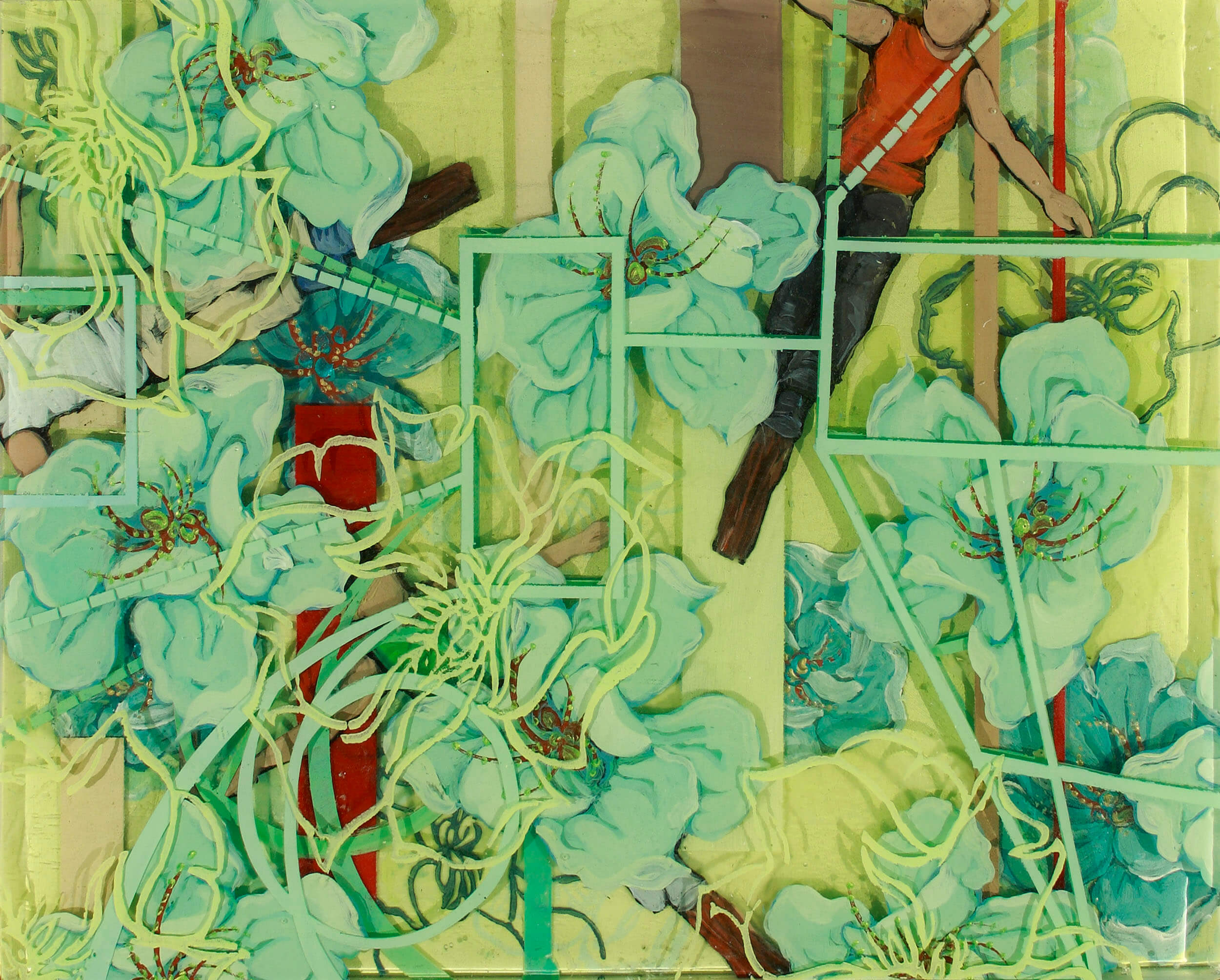
Child Palace
Child Palace, or “Zigong” comes from the Mandarin characters which make up the word “womb.” The characters resonated with me not only for their lyric quality, but as being conceptually aligned with the ever growing global corporatocracy as creating a sort of misguided playland. This international community headed by large corporations and powerful governments has thinly veiled neocolonialist intentions, imposing its economic and political policies on developing countires. It has, as yet, been unable to reconcile individual human needs, environmental issues, autocracy and societal health with its practices. It has ignored the effects of its “neoliberal economics” ideology on the majority of populations resulting in the destruction of cultures, communities, environments, and democracies. Facades of stability and promises of independence have allowed for unrestrained construction, loss of individual economic and political power, and the creation of an elite, protected class. This elite class exists in a construct separate from the vast majority, increasingly comfortable in an imposed landscape of grids, manufactured substances, and plastic environments. Child Palace is an exploration of these plastic environments and subsequent pollution.
The installation places the viewer into the environments created within the paintings. Allowing the viewer to interact with the hanging scultural forms scaled to emulate these hysteric worlds creates the layered experience of play undermined by a sense of discomfort and questioning.
Blueprints, pathways, biomorphic forms, giant flowers, and intense colors create a jungle surrounding, supporting and threatening to oppress the human forms working and playing within.